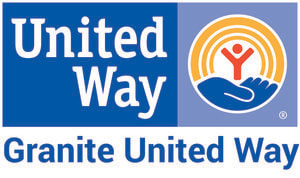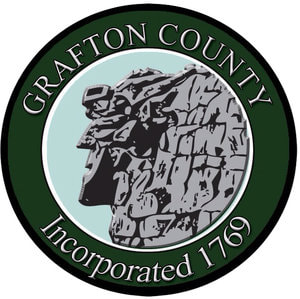New Hampshire Supportive Housing Toolkit.
|
Introduction Overview of Permanent Supportive Housing for Persons with Developmental Disabilities Exploration Development Housing Operations Supportive Services Other Living Expenses of Individuals Putting It All Together: Budgeting For The Individual Developing and Maintaining Your Nonprofit Tax-Exempt Entity Additional Resources Glossary |
The lack of sufficient supportive housing in New Hampshire is part of the larger problem of lack of sufficient affordable housing, which in turn is part of the still larger problem presented by the State’s lack of sufficient housing overall. See NHHFA’s Housing Market Report, dated November 2018.[1] The lack of sufficient affordable housing, and of supportive housing in particular, is also a national issue.[2]
[1] See https://www.nhhfa.org/assets/pdf/HousingMktRept_11-2018.pdf. [2] See https://nlihc.org/news/us-has-national-shortage-more-72-million-affordable-available-rental-homes-families-most-need and https://www.cbpp.org/research/housing/supportive-housing-helps-vulnerable-people-live-and-thrive-in-the-community. Linked document: Priced Out - The Housing Crisis for People with Disabilities
A) Principles of Supportive HousingSupportive (sometimes referred to as “supported”) housing (in the U.K., “Supported Living”) combines permanent, affordable housing with the health and human services residents need to live safely. While this Toolkit focuses on the needs of persons with intellectual or developmental disabilities (“I/DD”), Supportive Housing programs nationwide serve a wide variety of populations, including working families, persons returning to the workforce, or with AIDS or other illnesses, or physical disabilities, or mental illnesses, or who were formerly homeless, or are in recovery from substance abuse, among others. While programs vary in the service needs of those served and in program philosophy, size, location, tenant mix, staffing and support, they share common principles. These principles reflect best practices; some of them are also required by state law or regulation, affordable housing financing obligations, or federal Medicaid requirements.
1.) Affordable and StableSupportive housing is designed to serve individuals with low incomes. While discussed in greater detail below, in some cases this may mean that a provider must anticipate budgeting on the assumption that Social Security Insurance will be the principal source of rental (and often board) income. Most providers will seek to augment SSI as much as possible with a rent subsidy program such as Section 8 or Section 811.[1] Nationally, some projects also rely on rental streams provided by units set aside for people who are not low income. Some projects have used low-income housing tax credits and other affordable housing funding streams to subsidize development and capital costs.
Supportive Housing is stable and permanent. Residents have leases and enjoy the legal rights accorded all tenants in their community. Programs vary in how they provide or arrange for services but uniformly stress residential stability as a foundation. Service providers assist tenants in meeting their lease obligations, including paying rent, maintaining a safe and healthy living environment, allowing others the peaceful enjoyment of their homes, and complying with house rules. [1] Section 811 funding in New Hampshire is presently targeted to individuals with mental illness. 2.) Safe and ComfortableTenants should both be, and feel, safe and comfortable in their homes. While safety begins with meeting or exceeding all applicable regulatory requirements, a provider must be prepared to evaluate and meet the safety needs of each individual tenant, whether more or less independent.
Obviously many factors can contribute to tenant comfort. As a provider, it’s particularly important to have clear administrative procedures concerning rent collection, building maintenance, monitoring visitors, enforcement of house rules, and opportunities for tenants to provide input on safety, comfort and other living conditions and to have that input promptly addressed. Regardless of individual needs and circumstances each tenant must feel that they have some collective control over their environment (and staff as well, particularly where staff may live-in). Safety and comfort include effective conflict resolution; a provider must anticipate, and have procedures to address, the interpersonal conflicts that will arise among any group of individuals living in close proximity. Tenants with I/DD may have highly-involved guardians; ensuring safety and comfort requires procedures for two-way communication with guardians, addressing guardian concerns and bringing issues of concern to the attention of guardians. Policies concerning guardians and family members must be clear with respect to both transparency and boundaries. 3. Person-Centered, Accessible, and Flexible Support ServicesSupportive services are designed to maximize each tenant’s ability to live independently and must be person-centered, reflecting each individual’s current needs and goals. Services must be flexible enough to be adjusted over time as the needs, interests and capacities of an individual may change.
A supported housing program designed to meet the needs of persons with I/DD might accommodate tenants with widely-varying levels of independence and support needs. Tenants might range, for example, from one who can prepare her own meals and travel alone to and from work to a one who requires 24/7 arms-length care and assistance with all activities of daily living (“ADLs”). Even if a tenant is independent enough not to need dedicated staffing, support services must be easily accessible and reliably available. Supported housing programming is designed to address tenant needs across domains. These include: activities of daily living; employment, volunteering and related activities and training; physical, medical, dental, and mental health needs; management of medication and money; and leisure. Tenant needs and available resources will drive which services are delivered on-site. Evaluation of services for effectiveness and usefulness and oversight of service delivery should occur on a regular basis. Room, board and staff support for persons with I/DD typically are funded through public benefits. In supportive housing for persons with I/DD, the provider may carry much of the social work burden of connecting tenants with public benefits and ensuring their continuing eligibility. While services and programming must adapt over time to the changing needs of individual tenants, the ability of a supportive housing program to make significant changes to its target tenant population or programming may be limited if funding, regulatory, or other legal requirements impose restrictions or limitations. Accordingly, a provider must weigh the long-term impact of each legal or contractual obligation the provider contemplates assuming. 4. Fostering IndependenceSupportive housing is intended to allow any individual to live independently, providing however much assistance each individual requires to do so. The role of supportive housing staff is to provide that assistance and, over time, help the individual increase his or her level of independence. Some individuals will eventually be able to live independently without ongoing support, others will need help from time to time, others will require intensive support in perpetuity, and still others will actually require increasing levels of support, particularly as they age into their senior years. In general, individuals benefit from services that are intended to further their independence. Examples of program efforts specifically intended to foster independence and empower individuals include the following:
B. Elements of Successful Supportive HousingMost essential for a successful development experience, more so even than money, is an individual who will drive it forward. An individual without experience in housing development can undertake this role, but must understand the level of commitment and amount and length of time that will be required.
Money is a close second: once an operation is up and functioning, there is cash flow, it is easier to raise money and there is the potential for another organization to take over operations if necessary. Upfront money (or comparable value, such as an existing property) is essential to get development started. A supportive housing setting must also be capable of being financially self-supporting once operating. Residents must also have individual income which can be allocated to operations, even if those incomes are limited to SSI. While Visions demonstrates that residents can be served without Section 8 rental assistance, Section 8 rent subsidy for each individual resident is highly desirable in order to reduce reliance on continuously seeking grants and fundraising to finance operations. Section 8 vouchers are difficult to qualify for and the length of time between an individual’s application and approval is typically a matter of years, although in New Hampshire, persons receiving Medicaid Waiver services receive a preference. Additional essential attributes for developing supportive housing include an appetite for financial risk and the ability to follow the various applicable regulatory regimes. The Visions Experience:
|
Visions For Creative Housing Solutions
THANK YOU SO MUCH TO THE ORGANIZATIONS WHO HAVE HELPED SUPPORT OUR EFFORTS!


